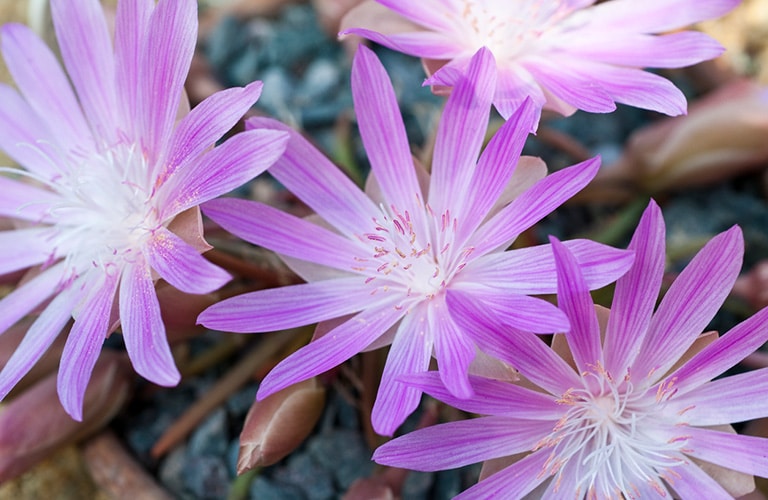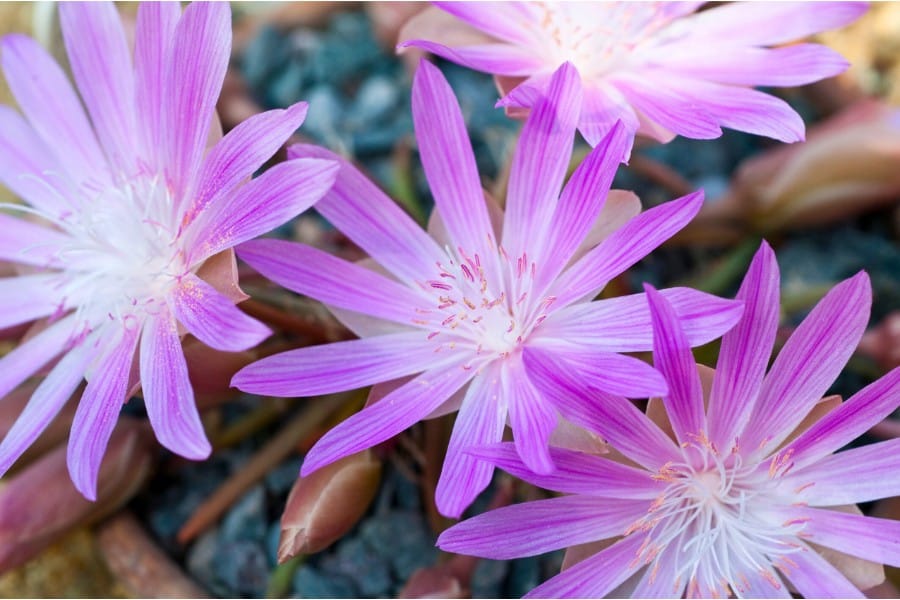
The Bitterroot Flower is the state flower of Montana and the namesake of the Bitterroot Valley.
The flower has a unique and interesting history that spans generations and cultures.
This article shares information about the history, uses, and habitat of the Bitterroot Flower.
Content may include affiliate links. As Amazon Associates, we earn from qualifying purchases at no cost to you
Meet the Original Bitterroot
The Bitterroot Valley, the Bitterroot River and the Bitterroot Mountains were all named after the beautiful Bitterroot Flower.
This delicate but hardy perennial herb grows in the Bitterroot Valley and throughout western Montana, as well as locations in Arizona, California, Colorado, Idaho, Nevada, Oregon, Utah, Washington, Wyoming and British Columbia.
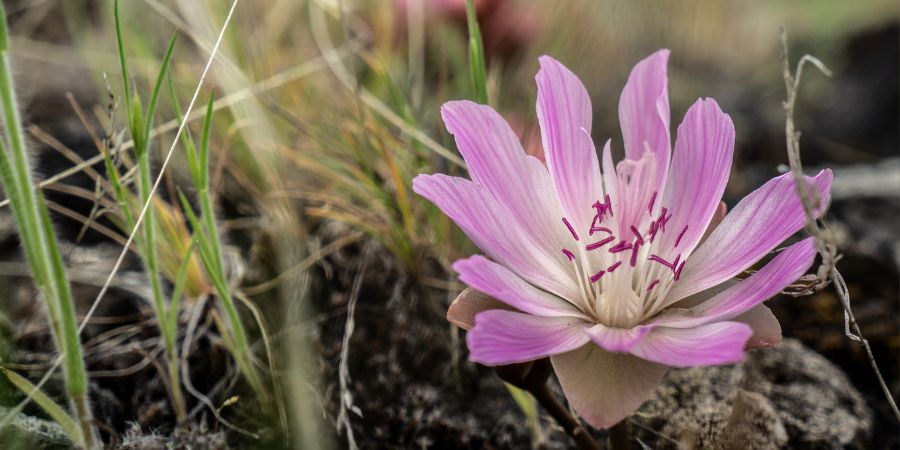
Bitterroot Flower / Bitterroot Info
Flowers bloom from April to July and blooms can take on a variety of colors from pink, to white, to lavender.
With its rich history, striking flowers, and ability to thrive in harsh conditions, the Bitterroot is one of the most iconic wildflowers of the American West.
All About the Montana State Flower
The Bitterroot (Lewisia rediviva) is a small perennial herb that belongs to the family Montiaceae.
The Bitterroot Flower grows in dry, gravely, and sandy soils at low and moderate elevations.
They prefer sparsely vegetated grasslands, bushlands, forests and valley locations.
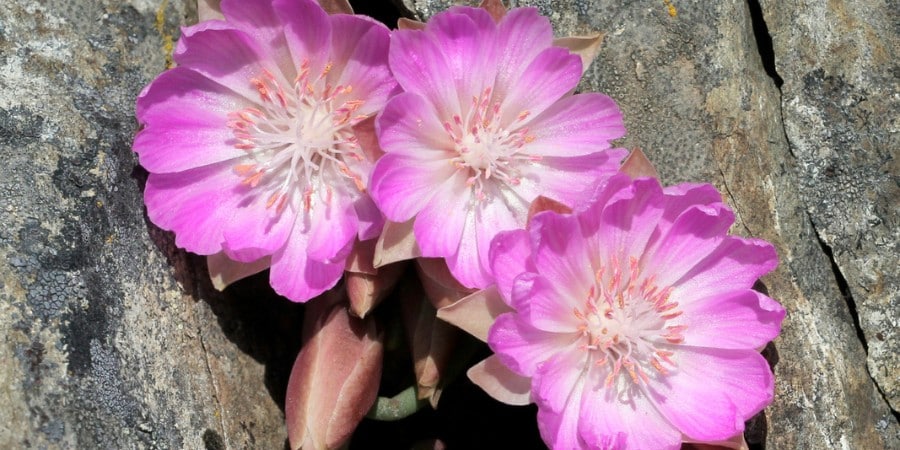
Bitterroot Flower / Bitterroot Info
One of its most fascinating traits is its ability to regenerate from dry, seemingly lifeless roots, a characteristic that inspired its specific epithet “rediviva,” meaning “revived” or “reborn.”
The plant forms a low rosette of spoon-shaped leaves that are succulent and evergreen, providing a lush green base throughout the year.
In the spring, the Bitterroot produces sturdy, upright stems that support its cheerful flowers.
These blooms are typically deep pink to rose in color, though they can sometimes be white or lavender, and they can grow up to 2 inches across.
Classification and Physical Traits
The Latin name for the flower is Lewisia rediviva, a name given by Frederick Pursh after the Lewis & Clark expedition, who established the new genus Lewisia in honor of Meriwether Lewis.
The Bitterroot Flower is classified as follows:
Kingdom – Plants – Plantae
Division – Flowering Plants – Anthophyta
Class – Dicots – Dicotyledoneae
Order – Caryophyllales – Caryophyllales
Family – Purslane Family – Portulacaceae
Species – Bitterroot – Lewisia rediviva
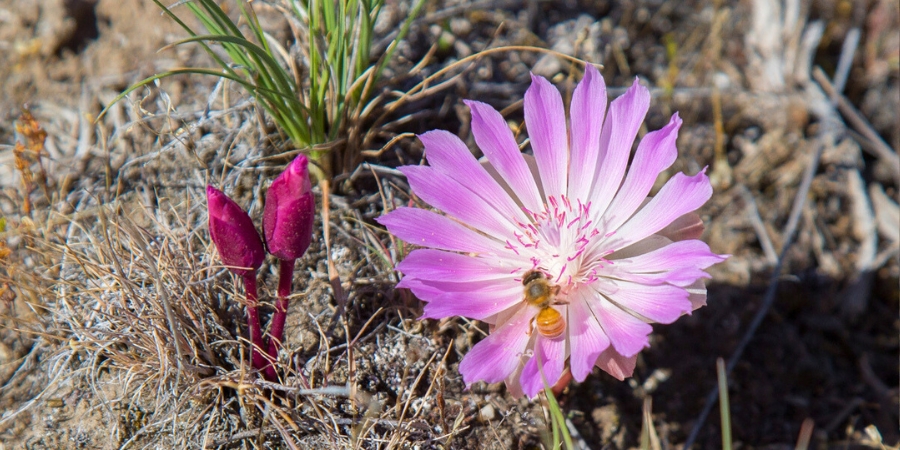
Bitterroot Flower with a Visitor / Bitterroot Info
Flower stems are approximately 0.4 to 2 inches long, with a single flower on each stem.
Each flower has 12 to 18 petals, ranging from about 0.6 to 1.4 inches in length.
Up to 20 seeds are produced when the flower reaches maturity.
History of the Bitterroot Flower
As with much of the history of the Bitterroot Valley, the history of the flower changed with the arrival of white explorers and settlers.
While Lewis & Clark are largely credited with discovering and naming the flower, the flower’s history pre-dates the Corps of Discovery’s journeys in 1805 & 1806.
Long before Lewis & Clark discovered the plant as a food source while exploring the area, the flower was culturally significant throughout the region.
The upper taproot of the Bitterroot Flower was important to Native Americans, particularly the Lemhi Shoshone, who believed it possessed special powers and used it for food and trade.
Seasonal migrations were timed in conjunction with the annual bloom, and the flower and its roots were gathered and dried, and used for food and trade.
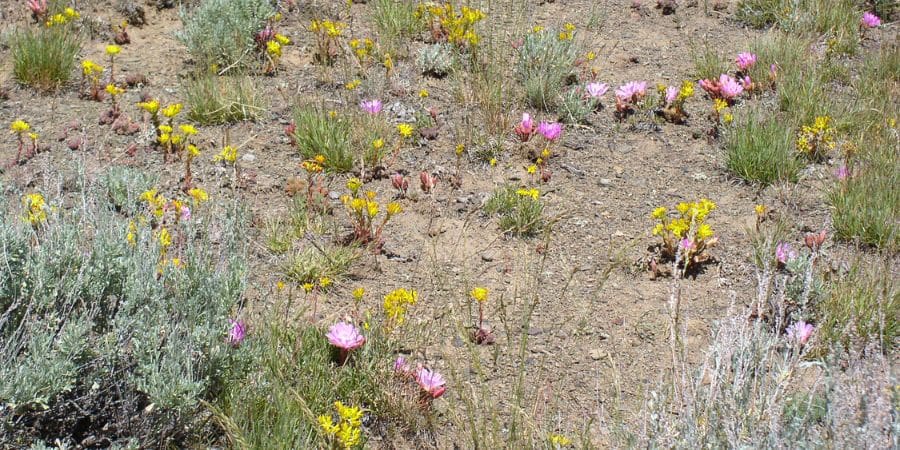
Bitterroot flowers in bloom / USDA NRCS
The Missoula Valley, to the north of the Bitterroot Valley, was a gathering place for harvesting the flower and it’s edible roots for numerous tribes including the Salish, Flathead, Nez Perce, Pend d’Oreille, and Kalispell.
Meriwether Lewis collected specimens of the Bitterroot during his explorations, contributing to the flower’s botanical classification and understanding.
As settlers arrived in the area, the Native Americans traded and bartered with bags of dried, processed roots that were highly sought after as a nutritious supplement to diets largely based on wild game.
On February 27th, 1895, the flower was adopted as the Montana State Flower.
Today, the natural habitat of the Bitterroot Flower continues to shrink as development of western Montana valleys continue to expand.
Uses and Significance
The Bitterroot has long been a culturally significant plant for several Native American tribes in the west.
The roots of the plant were traditionally gathered and dried for storage, serving as a vital food source and valuable trade item.
Despite its bitter taste, the root was often cooked and mixed with meat or berries to create a more palatable dish.
Beyond its nutritional value, the Bitterroot was also used for various medicinal purposes.
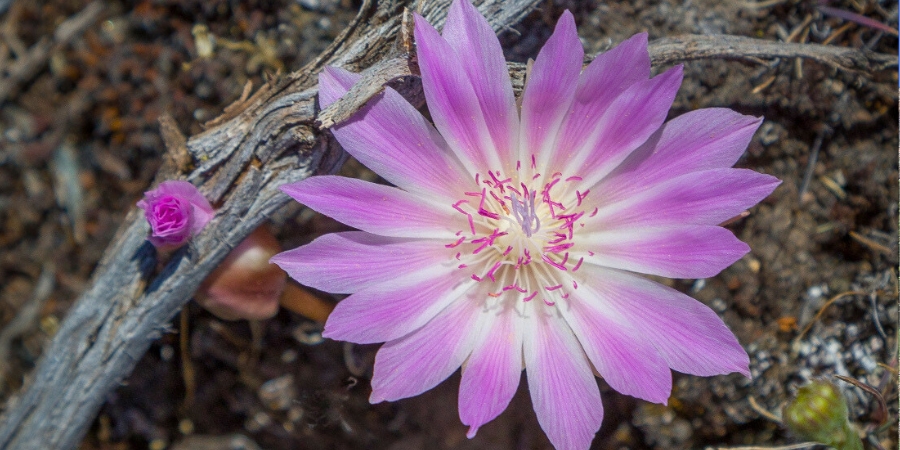
Bitterroot Flower with a “bud”dy / Bitterroot Info
It was believed to increase the flow of milk in nursing mothers, relieve the pain of a sore throat, neutralize poison ivy rash, and even suppress symptoms of diabetes.
Today, while its medicinal uses are less common, the Bitterroot is still valued for its unique characteristics and is often planted in gardens for its ornamental appeal.
The vibrant flowers thrive in full sun or morning sun with afternoon shade, making the Bitterroot an ideal choice for alpine gardens, rock gardens, planters, gravel walkways, or any garden with lean, well-drained soil.
Its resilience and striking appearance make it a favorite among gardeners looking to add a touch of natural beauty to their landscapes.
Habitat and Ecosystem
The Bitterroot thrives in a variety of habitats, including sagebrush shrublands, piñon-juniper woodlands, oak woods, and forests dominated by Ponderosa pine or Douglas fir.
The plant prefers well-drained gravelly soils and can be found at elevations ranging from 2,500 feet in California to over 10,000 feet in Utah.
The Bitterroot often grows alongside other plants such as sagebrush, bitterbrush, and various grasses, creating a unique ecosystem that supports its growth.
The plant’s remarkable ability to regenerate from dry, seemingly dead roots allows it to survive in areas with limited water availability.
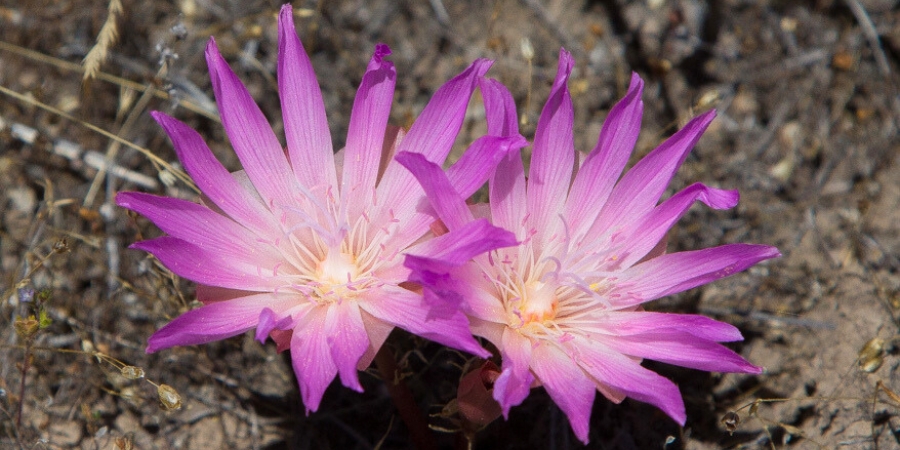
Bitterroot Flower Twins / Bitterroot Info
This resilience offers insight into how plants in the western US adapt and survive in harsh environments.
However, today, Bitterroot flower populations are facing decline due to habitat loss, fragmentation, and degradation.
To combat this decline, the Forest Service is actively working to conserve Bitterroot populations through habitat restoration and protection efforts.
These conservation measures are crucial to preserving the natural habitat of the Bitterroot and ensuring its survival for future generations.
That’s a Good Question
Where does the Bitterroot Flower grow?
The flower prefers dry, gravelly, sandy soil in moderate elevations of grasslands and forests in western Montana, Arizona, California, Colorado, Idaho, Nevada, Oregon, Utah, Washington, Wyoming and British Columbia.
Blooming occurs from April to July.
Montana designated the Bitterroot as its state flower on February 27, 1895.
Additional Resources
Interesting article about Salish use of the flower can be found here
